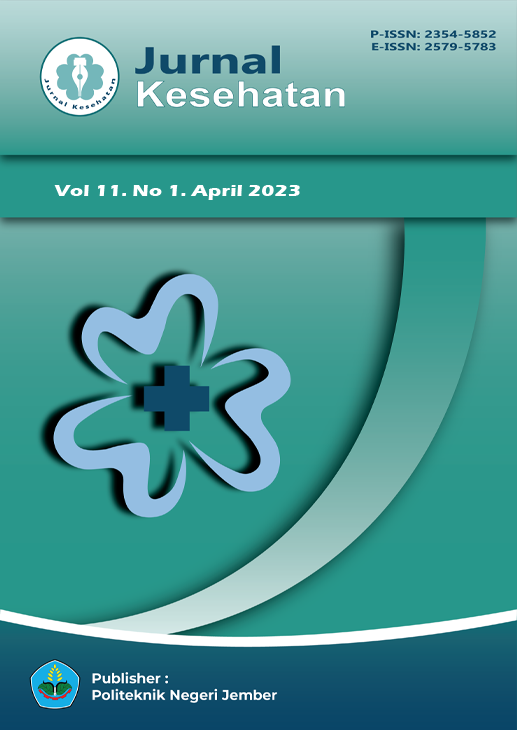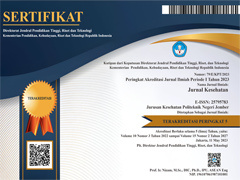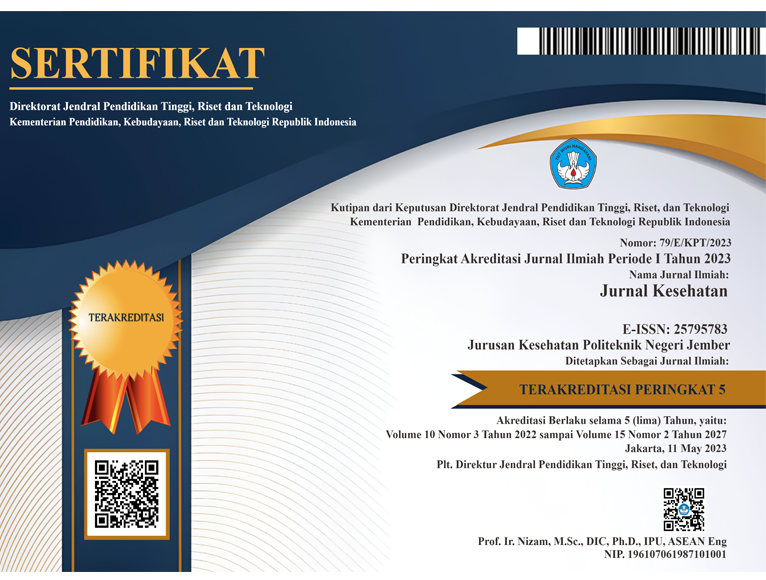Efek Seduhan Tepung Daun Kelor terhadap Kadar Glukosa Darah Puasa Tikus Diabetes Melitus
DOI:
10.25047/j-kes.v11i1.289Downloads
Abstract
Diabetes Mellitus (DM) is a group of metabolic disease with characteristic which caused by abnormal insulin secretion, insulin process or both of it. Moringa is a plant which have high bioactive compound. Flavonoid total content of a moringa powder is a 473,3 mg/100 g. The study aimed to analyze the efffect Steep of Moringa leaf flour on fasting blood glucose levels of diabetic rats. Experimental with pretest posttest control group design was used in this study. A total of 15 male Sprague dawley rats who obtained LPPT 4 Gadjah Mada University at Yogyakarta was selected as research samples. Rats were assigned to three experimental group (negative control group, positive control group, and treatment group). Negative control group (n=5) was given intraperitoneal injection with phosphat buffer saline (PBS), positive control group (n=5) was given intraperitoneal injection with single low dose STZ (30mg/kgBB), and treatment group (n=5) was given intraperitoneal injection with single low dose STZ (30mg/kgBB) and moringa leaf flour steeping at 3,75 g/kgBB. Fasting blood glucose levels was analyzed using GPO-PAP methods after 3 days STZ-induced rats. Data analysis used Kruskal wallis and One Way Anova test. Pretest and posttest fasting blood glucose levels had a significant difference between groups (p=0.008 and p=0,000). Moringa leaf flour steeping to decrease fasting blood glucose levels of diabetics rats.
License
Copyright (c) 2023 Adhiningsih Yulianti -, Ahmad Andi Setiawan, Uun Ratriantari

This work is licensed under a Creative Commons Attribution-ShareAlike 4.0 International License.
Authors who publish in this journal agree to the following terms:
1. Copyright belongs to the medical journal as a publication
2. The author retains copyright and grants the journal rights to the first publication carried out simultaneously under a Creative Commons Attribution License which allows others to share the work with an acknowledgment of the author's work and initial publication in this journal.
3. Authors may enter into separate additional contractual arrangements for the non-exclusive distribution of the work (eg sending it to an institutional repository or publishing it in a book) with acknowledgment of initial publication in this journal.
4. Authors are permitted and encouraged to post work online (eg in institutional repositories or on their websites) before and during the submission process, as before and larger citations of published work (see Effects of Open Access).
Selengkapnya tentang teks sumber ini














